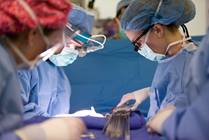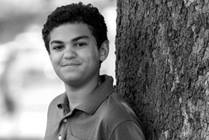Search Results
Viewing: 41-50 of 71 | All

Blog
Malone Appendicostomy: Relief From Chronic Constipation
A Malone appendicostomy is a surgery that makes a pathway from the belly button to the colon. It is used as a treatment for kids with chronic constipation.
Article
Direct Laryngoscopy and Bronchoscopy
Learn about a direct Laryngoscopy and/or Bronchoscopy procedure to examine a voice box.
Article
Oxygen Therapy at Home
The cells in our bodies need oxygen to live. Without enough oxygen, growth and development can slow down. This Helping Hand includes helpful information if your child is prescribed oxygen therapy at home.
Article
IV: PICC Line
The PICC line is a plastic tube that is inserted into a large vein to give intravenous therapy.
Article
IV: Implanted Port
The implanted port is a device that is placed under the skin. It lessens the need to start an IV for every treatment.

Blog
What is Emergence Delirium?
As an anesthesiologist I have answered every question about the risks of anesthesia before procedures. I understand, it can be scary. Including questions like: "my child just had her tonsils out, why is she acting like a child possessed?" "My child just had ear tubes and he woke up and is hitting
Article
Secondhand Smoke
Secondhand smoke is what you breathe in when you are around a smoker. It is what the smoker breathes out and the smoke that comes from the burning end of a cigarette, cigar or pipe. It contains more than 4,000 chemicals. There is no safe level of exposure.

Condition
Persistent Diarrhea & Malabsorption
Diarrhea lasting more than seven days is considered persistent, while less than seven days is acute. Diarrhea that lasts more than 30 days is chronic. Toddler's diarrhea is caused by a diet low in fat and high in sugar and fluids. Malabsorption is the inability to use the food the body takes in.

Condition
Subglottic Stenosis
Subglottic stenosis is a narrowing of the airway in the part of the voice box below the vocal cords (glottis). There are two kinds of subglottic stenosis: congenital subglottic stenosis and acquired subglottic stenosis.
